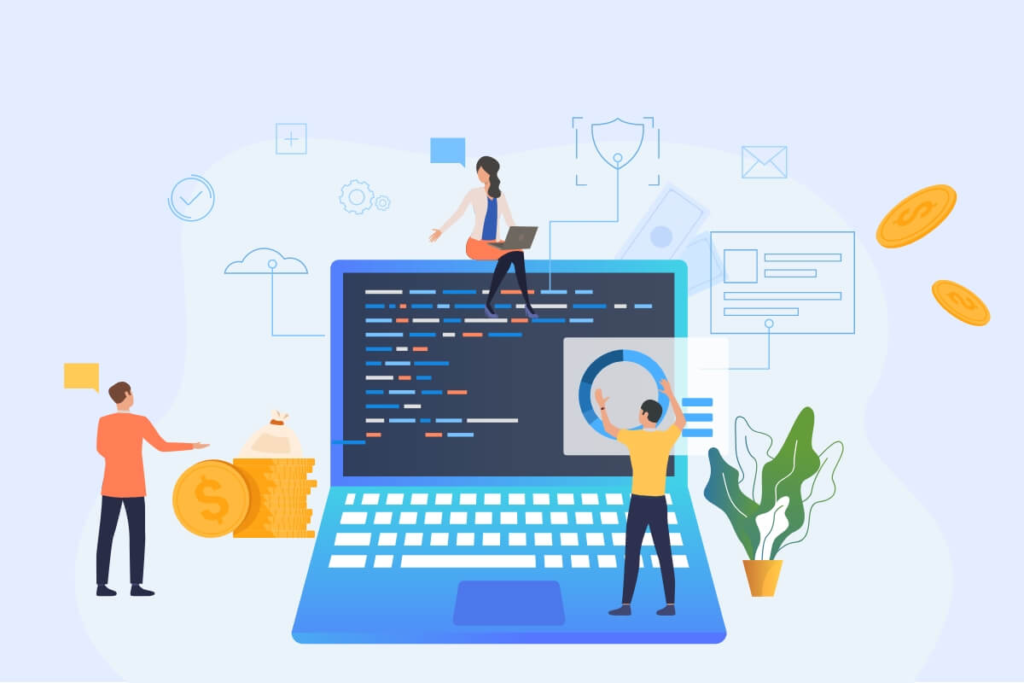The SDLC, or Software Development Life Cycle, is a plan for developing a software program. Building software follows a defined step-by-step procedure.
The SDLC ensures that each step of the software development process, whether design, development, testing, or release, is done effectively and without problems.
In this post, we will go over everything you need to know about the Software Development Life Cycle and show you some of the advantages of using it.
In This Article
The Advantages of the Software Development Life Cycle (SDLC)
Businesses benefit from the Software Development Life Cycle in a variety of ways. Hiring software engineers have several advantages for both startups and established businesses. The following are the most essential benefits that SDLC delivers to development teams.
Goal-setting clarity
Best Software Developers fully understand the objectives they must accomplish and the deliverables they must complete within a certain time frame, reducing the risk of wasting time and money.
Appropriate testing
The software development life cycle models will include all of the required checks and balances to guarantee that the program is adequately tested before it is released.
Clear stage progression
An SDLC prevents developers from moving on to the next step until the previous one is done. In this manner, you’ll be able to discern a clear progression of phases.
Perfection
The SDLC steps are built in such a manner that a feedback loop is created. Thus, by following a thorough software product development process, you may iterate and improve on products until they are ideal.
Member adaptability
Because the SDLC process phases are well-documented, the specialized software development team can smoothly replace team members who have left the company.
A Software Development Life Cycle’s Six Stages
Gathering and Analyzing Requirements
This stage allows organizations and their software development teams to better understand the functionality that customers want.
Companies should perform thorough consumer research and analysis before delivering that knowledge in the form of a list of specific software features that will move their business ahead.
If you want to learn more about the stages of software development from professional developers – go now and get feedback from experts.
Stage of design and prototyping
To make design decisions, the preceding software development stages’ list of software requirements is employed.
One or more designs are produced throughout the custom software design process to obtain the desired outcome. The design phase may contain diagrams, flow charts, drawings, and schemas, depending on the topic of the project. Typically, after the design is completed in the design stage, revisions cannot be made subsequently.
Software Implementation and Coding
Following design, software engineers may proceed to the third stage of the SDLC, which is implementation and coding.
The program design is turned into source code at this step.
This is frequently the longest phase in the whole life cycle since developers must confirm that the code is proper before making it online. This is also why it is common for developers to return to this step several times if the tests reveal any flaws.
Software Testing
If a piece of software’s code is faulty, it cannot work correctly. To guarantee this, the software development business must test the code many times if necessary.
Only after developers are certain that the code is error-free can it be shown to the user.
Throughout this stage, the source code will be subjected to a variety of tests, both functional and non-functional, such as system, integration, unit, acceptance, and so on.
Stages of implementation and integration
After the bespoke program has been tested, the software’s implementation and integration will begin. The skilled software developers will incorporate several modules or designs into the main source code based on the project’s needs.
Maintenance and Management of the Software
There is still a lot of work to be done in the development life cycle once the product is online. Some issues, for example, may not manifest themselves until the program is put through its paces.
As a result, during this point, the software development business must keep ongoing engagement with the consumer through customer care channels such as phone, email, or chatbot.
Conclusion
Understanding the bespoke software development lifecycle before engaging a firm or collaborating with any vendor is critical to ensuring that you obtain the proper solution. Following the SDLC process precisely helps you to provide a solid basis for executing your software development strategy. All phases of the SLDC are equally significant, although the number of stages for bespoke software development varies based on the development methodology used.




